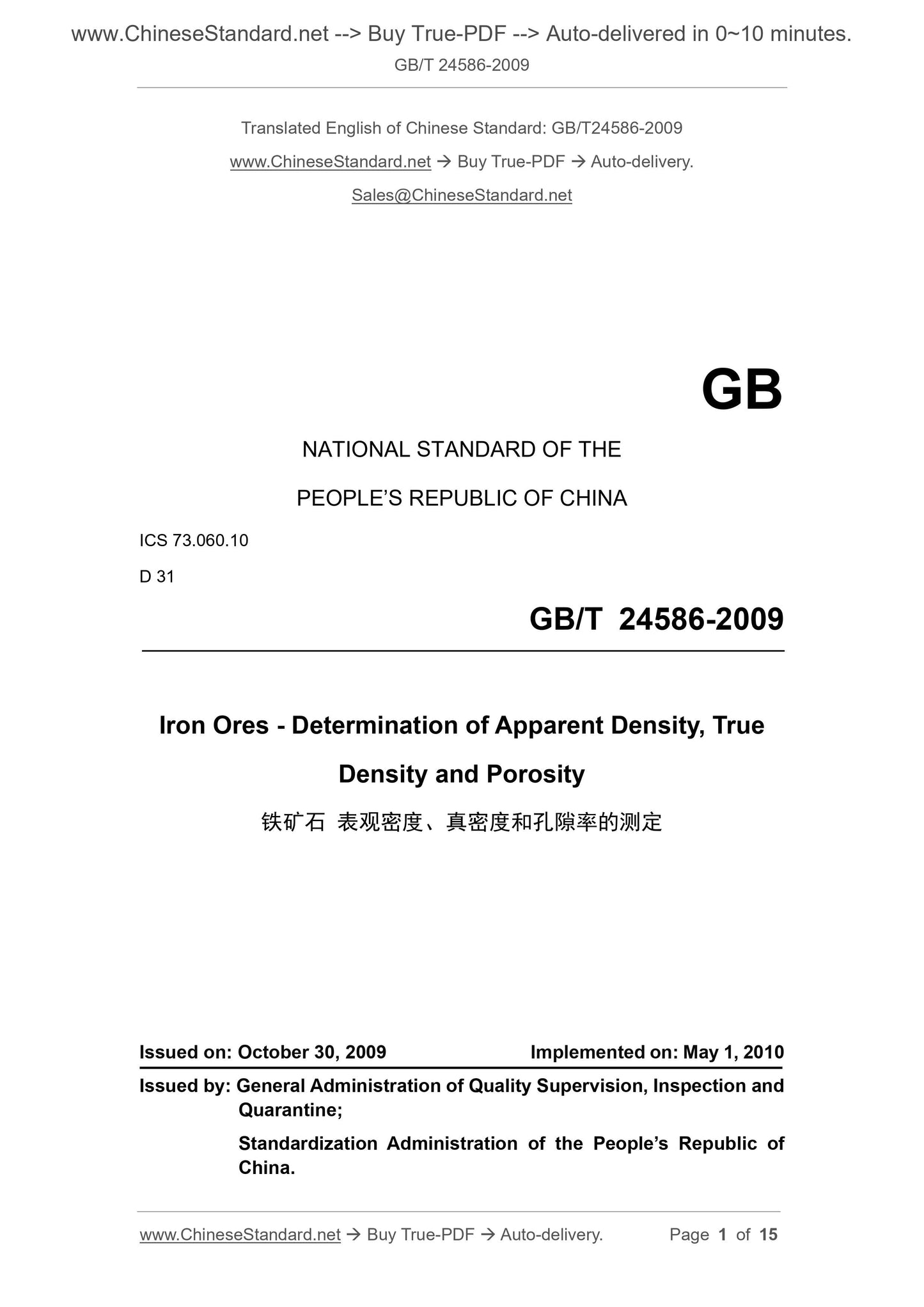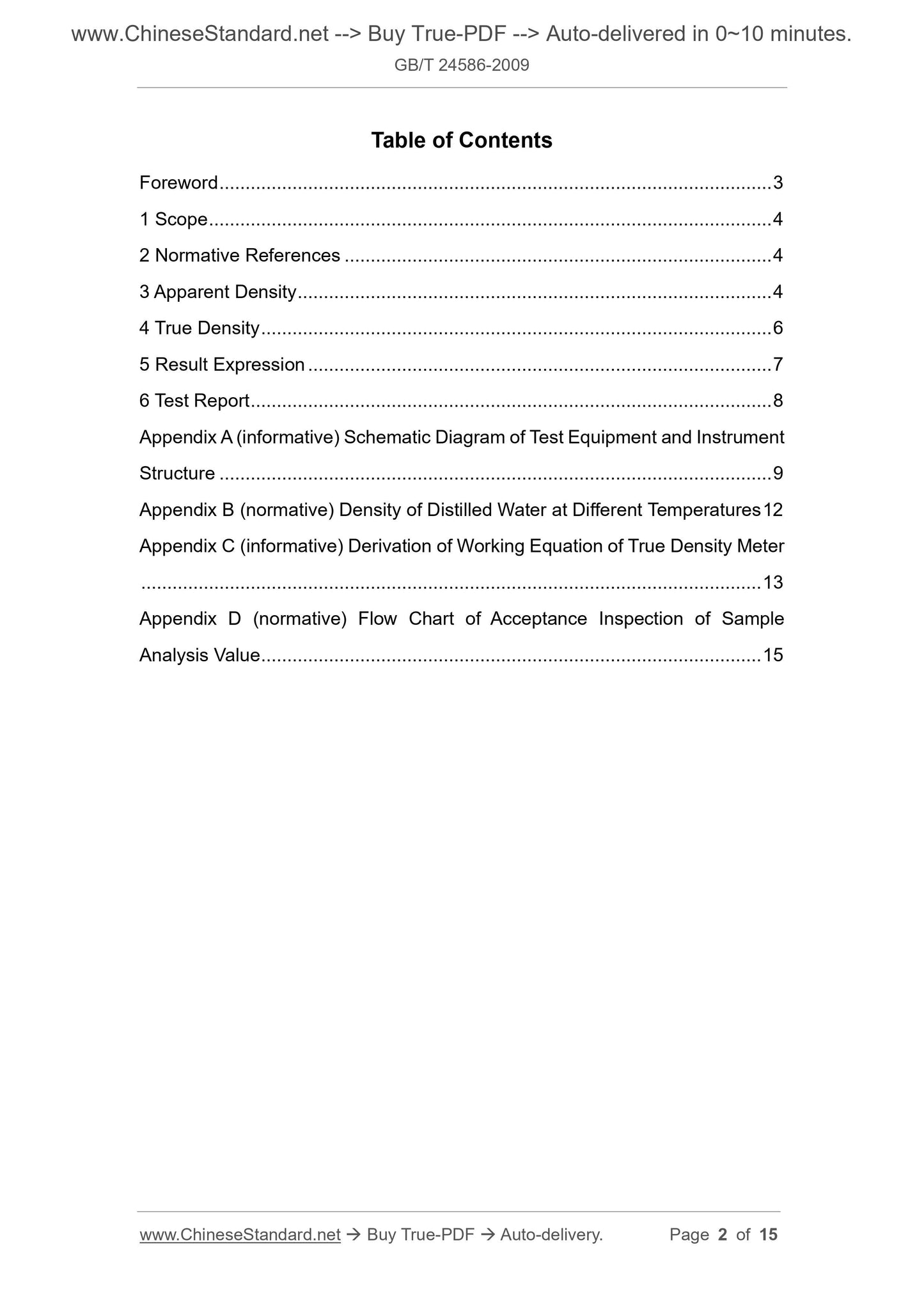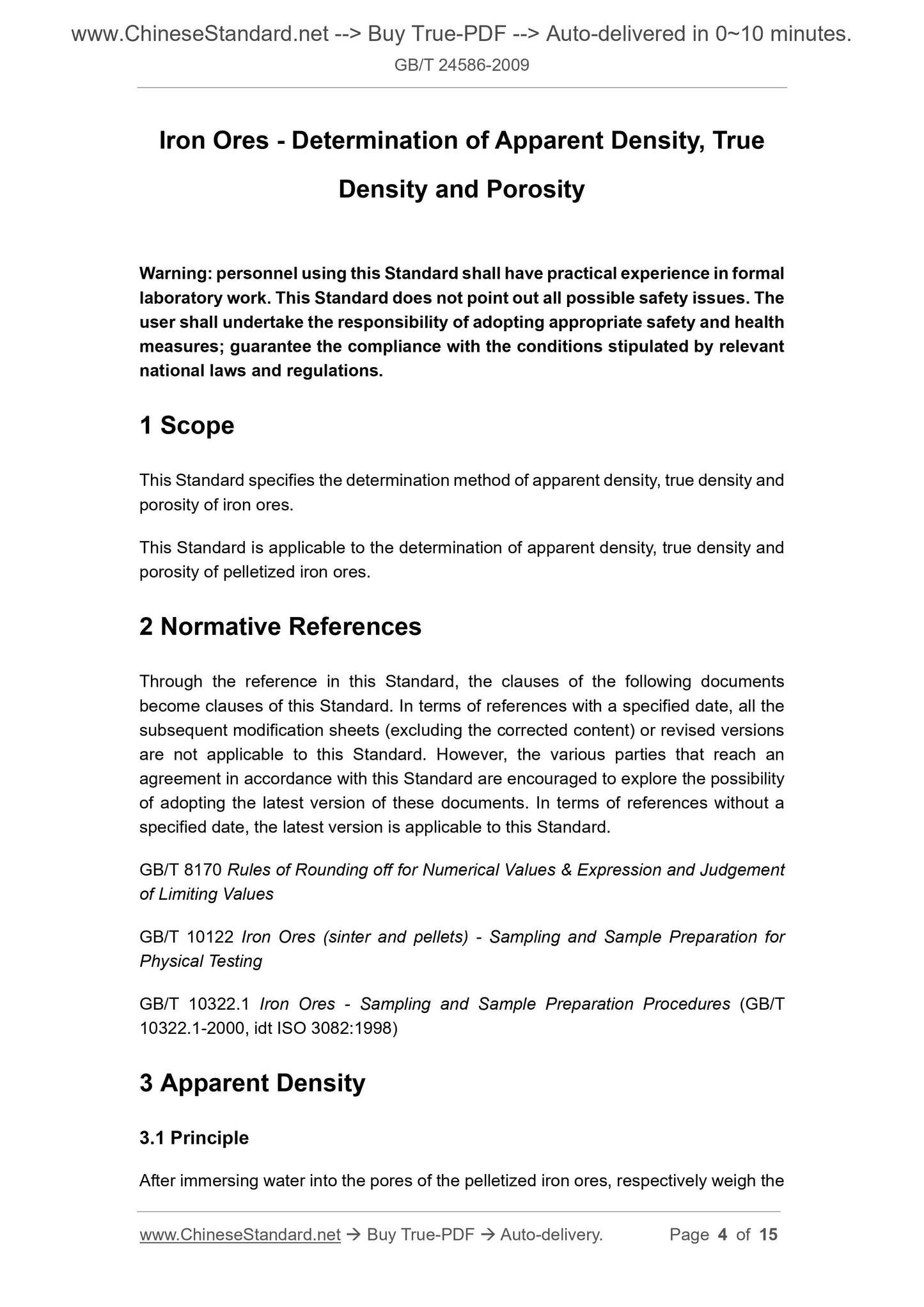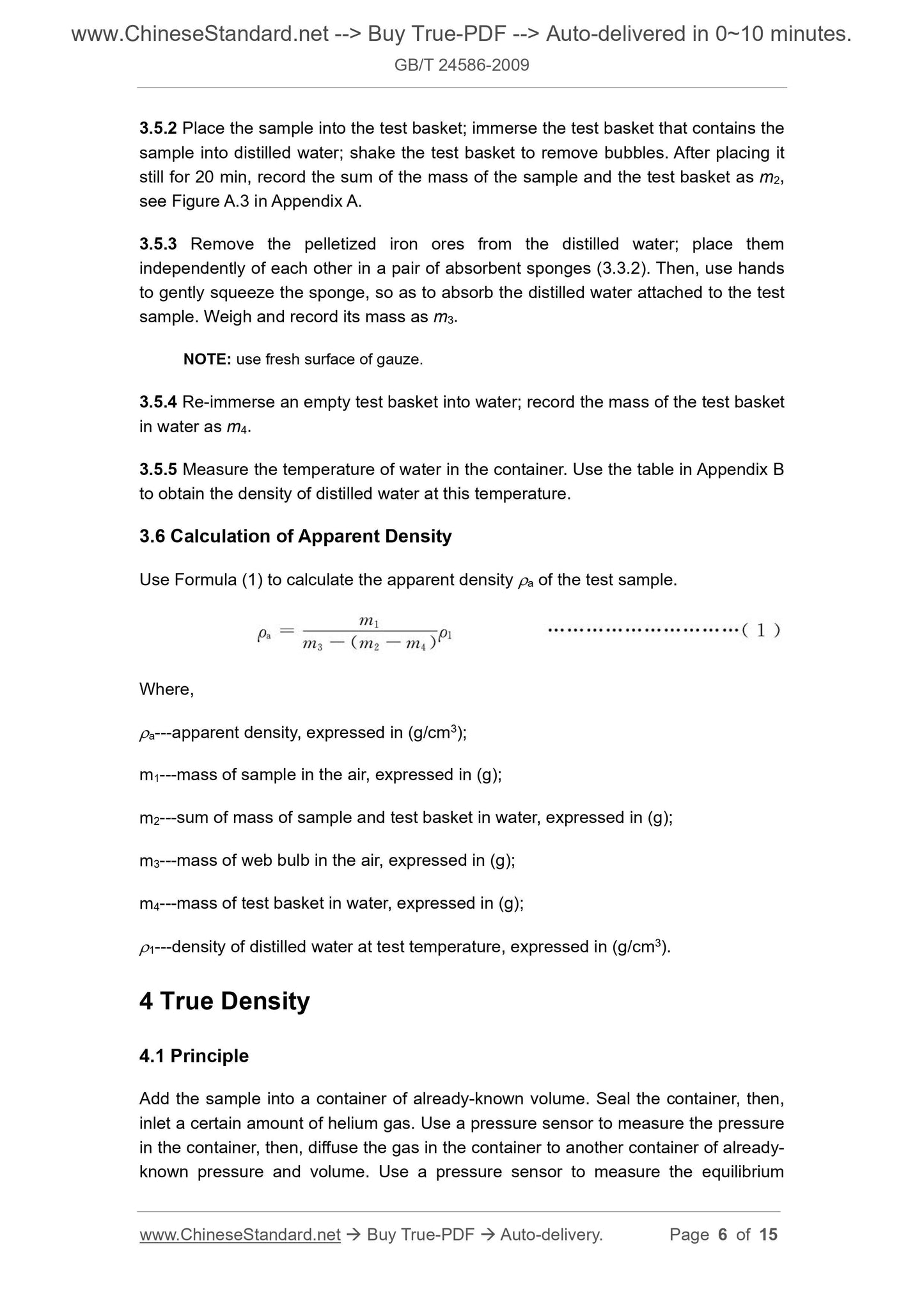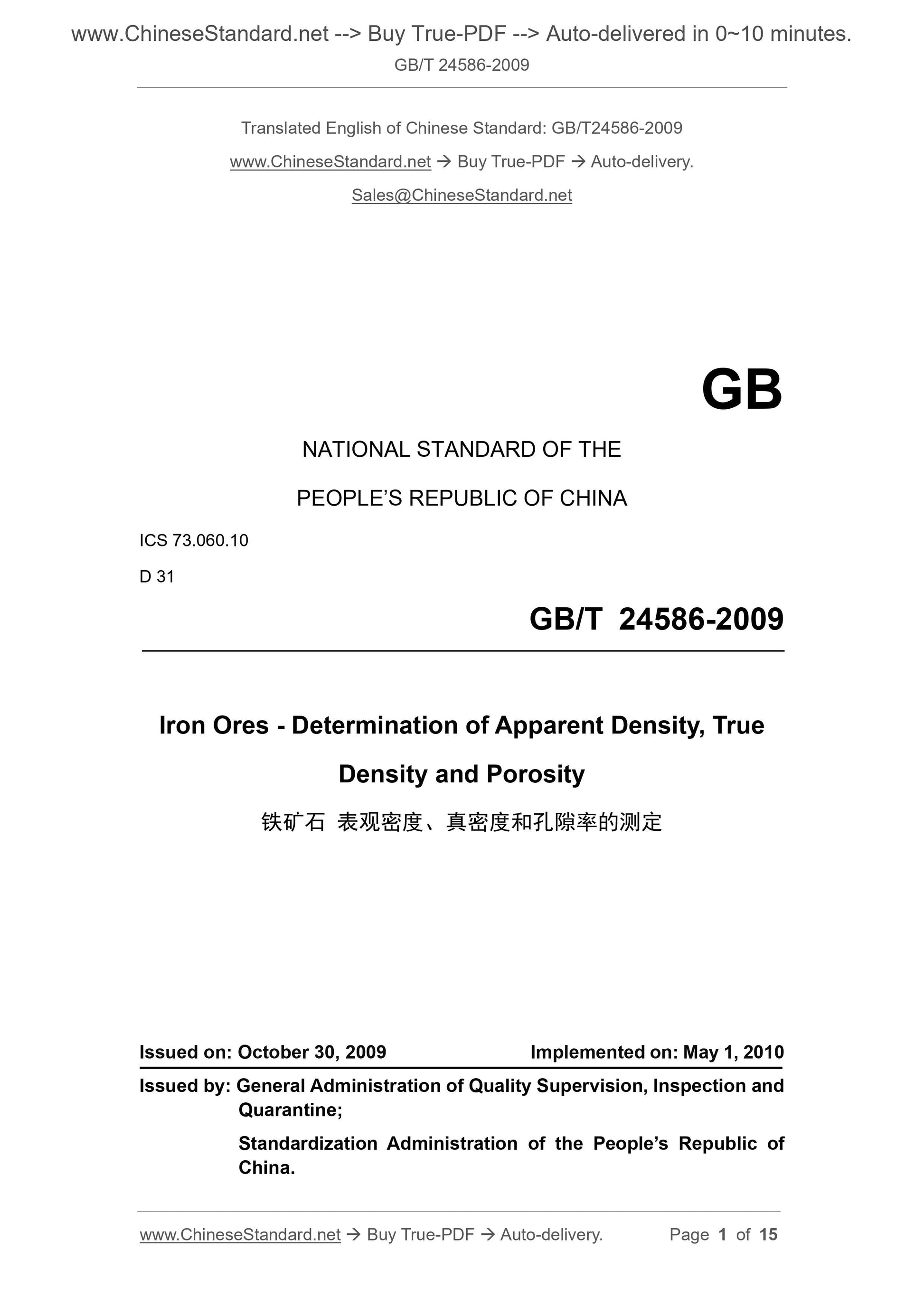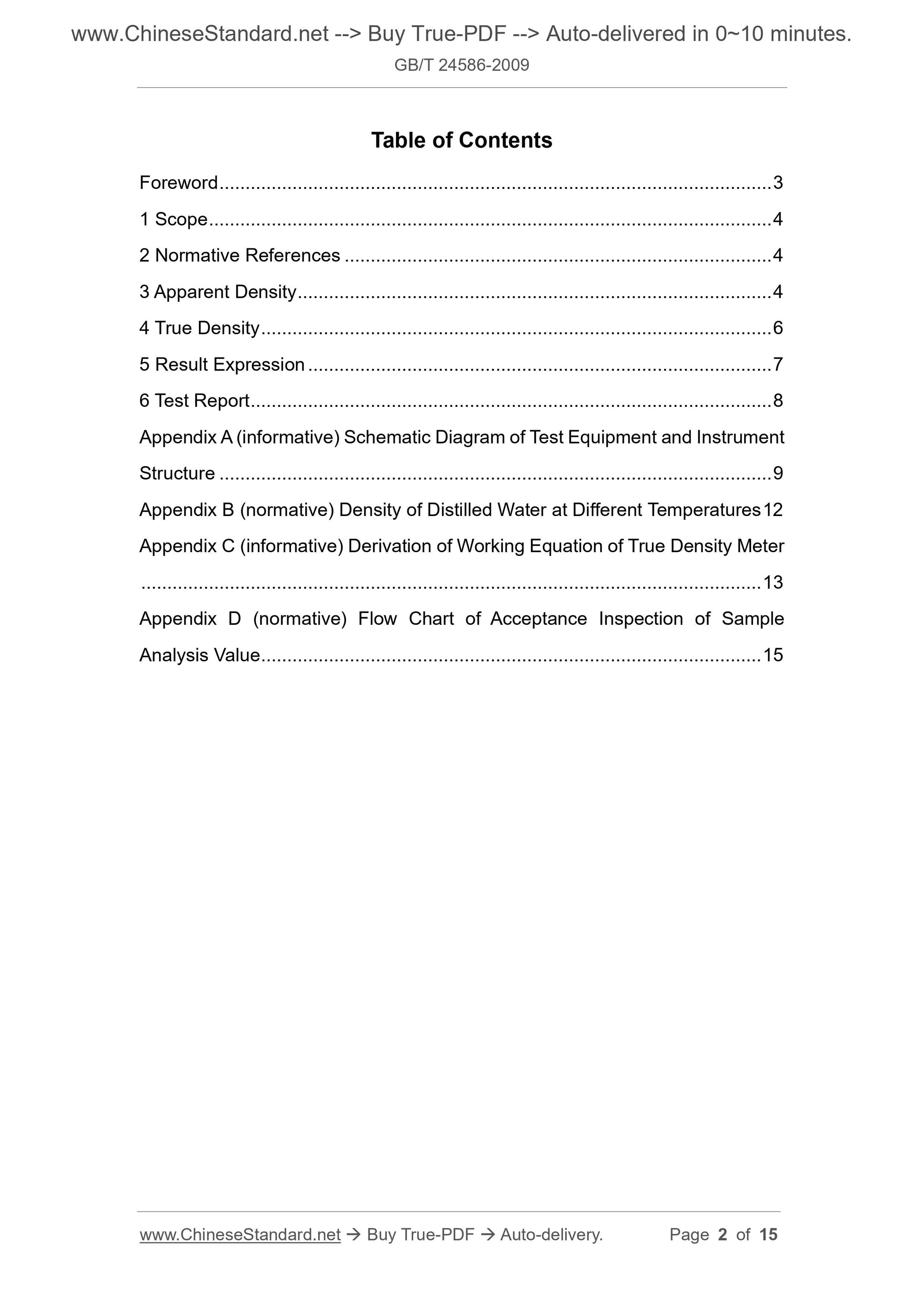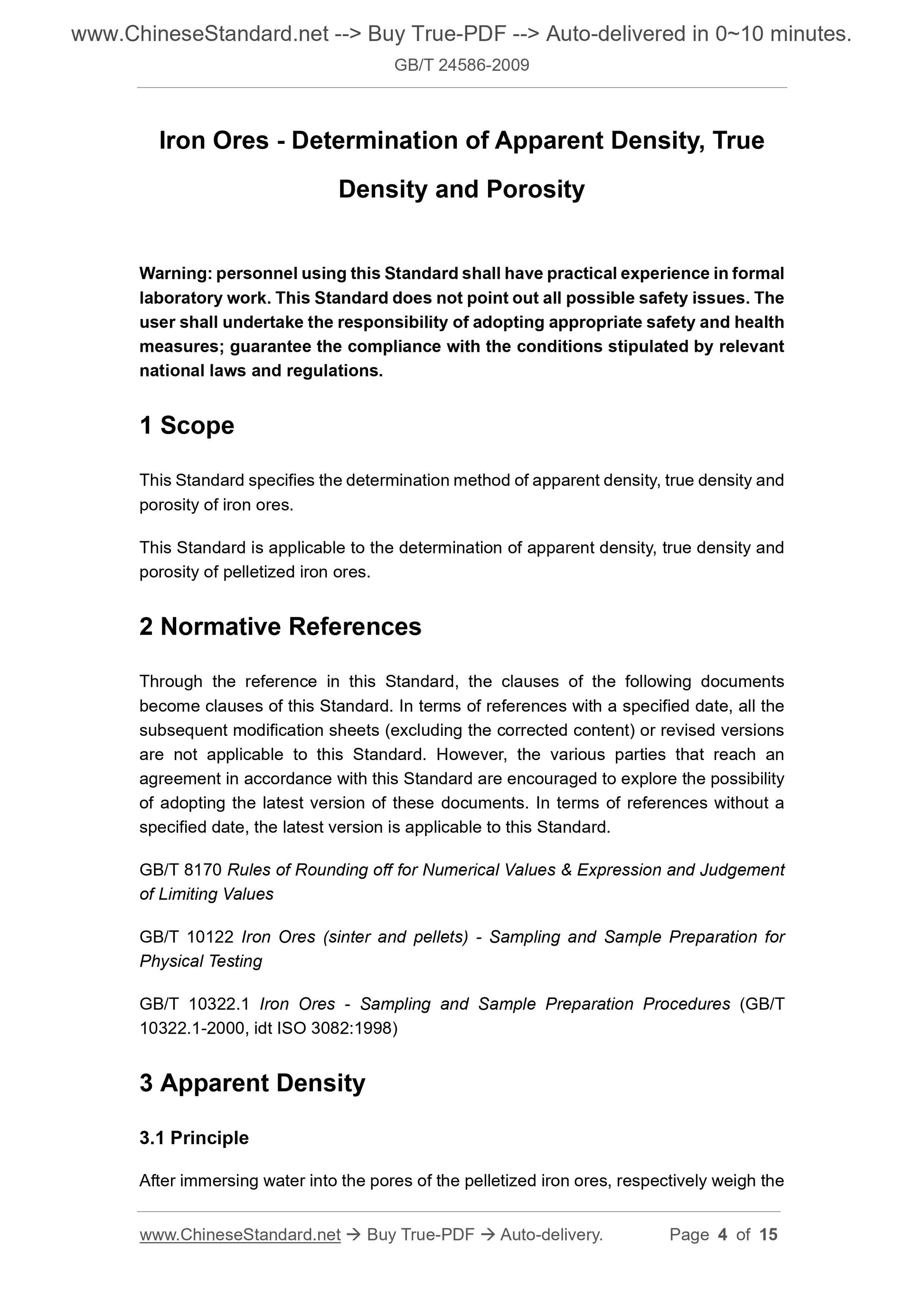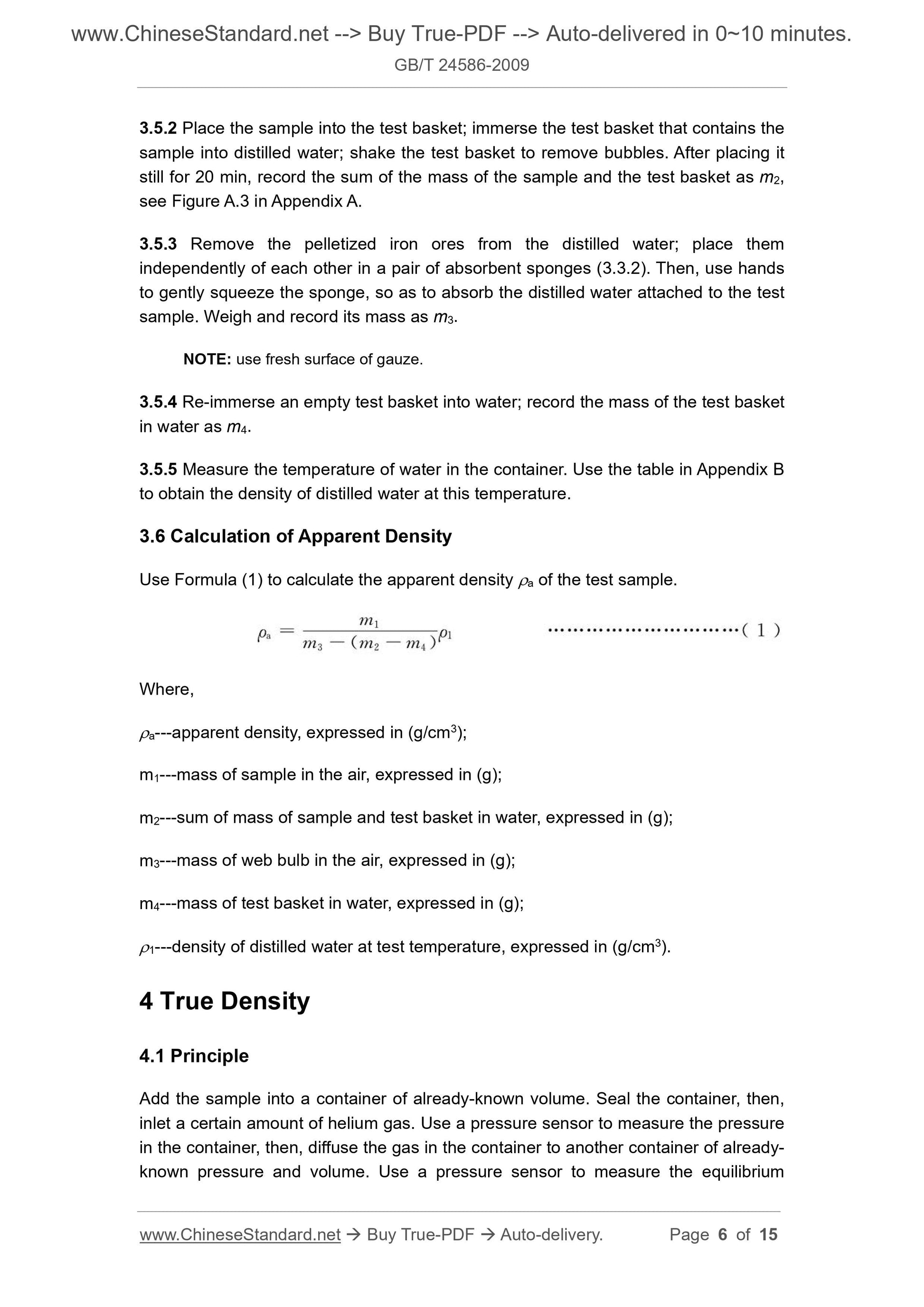1
/
of
4
PayPal, credit cards. Download editable-PDF and invoice in 1 second!
GB/T 24586-2009 English PDF (GBT24586-2009)
GB/T 24586-2009 English PDF (GBT24586-2009)
Regular price
$180.00 USD
Regular price
Sale price
$180.00 USD
Unit price
/
per
Shipping calculated at checkout.
Couldn't load pickup availability
Delivery: 3 seconds. Download true-PDF + Invoice.
Get QUOTATION in 1-minute: Click GB/T 24586-2009
Historical versions: GB/T 24586-2009
Preview True-PDF (Reload/Scroll if blank)
GB/T 24586-2009: Iron ores -- Determination of apparent density, true density and porosity
GB/T 24586-2009
GB
NATIONAL STANDARD OF THE
PEOPLE’S REPUBLIC OF CHINA
ICS 73.060.10
D 31
Iron Ores - Determination of Apparent Density, True
Density and Porosity
ISSUED ON: OCTOBER 30, 2009
IMPLEMENTED ON: MAY 1, 2010
Issued by: General Administration of Quality Supervision, Inspection and
Quarantine;
Standardization Administration of the People’s Republic of
China.
Table of Contents
Foreword ... 3
1 Scope ... 4
2 Normative References ... 4
3 Apparent Density ... 4
4 True Density ... 6
5 Result Expression ... 7
6 Test Report ... 8
Appendix A (informative) Schematic Diagram of Test Equipment and Instrument
Structure ... 9
Appendix B (normative) Density of Distilled Water at Different Temperatures 12
Appendix C (informative) Derivation of Working Equation of True Density Meter
... 13
Appendix D (normative) Flow Chart of Acceptance Inspection of Sample
Analysis Value ... 15
Iron Ores - Determination of Apparent Density, True
Density and Porosity
Warning: personnel using this Standard shall have practical experience in formal
laboratory work. This Standard does not point out all possible safety issues. The
user shall undertake the responsibility of adopting appropriate safety and health
measures; guarantee the compliance with the conditions stipulated by relevant
national laws and regulations.
1 Scope
This Standard specifies the determination method of apparent density, true density and
porosity of iron ores.
This Standard is applicable to the determination of apparent density, true density and
porosity of pelletized iron ores.
2 Normative References
Through the reference in this Standard, the clauses of the following documents
become clauses of this Standard. In terms of references with a specified date, all the
subsequent modification sheets (excluding the corrected content) or revised versions
are not applicable to this Standard. However, the various parties that reach an
agreement in accordance with this Standard are encouraged to explore the possibility
of adopting the latest version of these documents. In terms of references without a
specified date, the latest version is applicable to this Standard.
GB/T 8170 Rules of Rounding off for Numerical Values and Expression and Judgement
of Limiting Values
GB/T 10122 Iron Ores (sinter and pellets) - Sampling and Sample Preparation for
Physical Testing
GB/T 10322.1 Iron Ores - Sampling and Sample Preparation Procedures (GB/T
10322.1-2000, idt ISO 3082:1998)
3 Apparent Density
3.1 Principle
After immersing water into the pores of the pelletized iron ores, respectively weigh the
3.5.2 Place the sample into the test basket; immerse the test basket that contains the
sample into distilled water; shake the test basket to remove bubbles. After placing it
still for 20 min, record the sum of the mass of the sample and the test basket as m2,
see Figure A.3 in Appendix A.
3.5.3 Remove the pelletized iron ores from the distilled water; place them
independently of each other in a pair of absorbent sponges (3.3.2). Then, use hands
to gently squeeze the sponge, so as to absorb the distilled water attached to the test
sample. Weigh and record its mass as m3.
NOTE: use fresh surface of gauze.
3.5.4 Re-immerse an empty test basket into water; record the mass of the test basket
in water as m4.
3.5.5 Measure the temperature of water in the container. Use the table in Appendix B
to obtain the density of distilled water at this temperature.
3.6 Calculation of Apparent Density
Use Formula (1) to calculate the apparent density a of the test sample.
Where,
a---apparent density, expressed in (g/cm3);
m1---mass of sample in the air, expressed in (g);
m2---sum of mass of sample and test basket in water, expressed in (g);
m3---mass of web bulb in the air, expressed in (g);
m4---mass of test basket in water, expressed in (g);
1---density of distilled water at test temperature, expressed in (g/cm3).
4 True Density
4.1 Principle
Add the sample into a container of already-known volume. Seal the container, then,
inlet a certain amount of helium gas. Use a pressure sensor to measure the pressure
in the container, then, diffuse the gas in the container to another container of already-
known pressure and volume. Use a pressure sensor to measure the equilibrium
Get QUOTATION in 1-minute: Click GB/T 24586-2009
Historical versions: GB/T 24586-2009
Preview True-PDF (Reload/Scroll if blank)
GB/T 24586-2009: Iron ores -- Determination of apparent density, true density and porosity
GB/T 24586-2009
GB
NATIONAL STANDARD OF THE
PEOPLE’S REPUBLIC OF CHINA
ICS 73.060.10
D 31
Iron Ores - Determination of Apparent Density, True
Density and Porosity
ISSUED ON: OCTOBER 30, 2009
IMPLEMENTED ON: MAY 1, 2010
Issued by: General Administration of Quality Supervision, Inspection and
Quarantine;
Standardization Administration of the People’s Republic of
China.
Table of Contents
Foreword ... 3
1 Scope ... 4
2 Normative References ... 4
3 Apparent Density ... 4
4 True Density ... 6
5 Result Expression ... 7
6 Test Report ... 8
Appendix A (informative) Schematic Diagram of Test Equipment and Instrument
Structure ... 9
Appendix B (normative) Density of Distilled Water at Different Temperatures 12
Appendix C (informative) Derivation of Working Equation of True Density Meter
... 13
Appendix D (normative) Flow Chart of Acceptance Inspection of Sample
Analysis Value ... 15
Iron Ores - Determination of Apparent Density, True
Density and Porosity
Warning: personnel using this Standard shall have practical experience in formal
laboratory work. This Standard does not point out all possible safety issues. The
user shall undertake the responsibility of adopting appropriate safety and health
measures; guarantee the compliance with the conditions stipulated by relevant
national laws and regulations.
1 Scope
This Standard specifies the determination method of apparent density, true density and
porosity of iron ores.
This Standard is applicable to the determination of apparent density, true density and
porosity of pelletized iron ores.
2 Normative References
Through the reference in this Standard, the clauses of the following documents
become clauses of this Standard. In terms of references with a specified date, all the
subsequent modification sheets (excluding the corrected content) or revised versions
are not applicable to this Standard. However, the various parties that reach an
agreement in accordance with this Standard are encouraged to explore the possibility
of adopting the latest version of these documents. In terms of references without a
specified date, the latest version is applicable to this Standard.
GB/T 8170 Rules of Rounding off for Numerical Values and Expression and Judgement
of Limiting Values
GB/T 10122 Iron Ores (sinter and pellets) - Sampling and Sample Preparation for
Physical Testing
GB/T 10322.1 Iron Ores - Sampling and Sample Preparation Procedures (GB/T
10322.1-2000, idt ISO 3082:1998)
3 Apparent Density
3.1 Principle
After immersing water into the pores of the pelletized iron ores, respectively weigh the
3.5.2 Place the sample into the test basket; immerse the test basket that contains the
sample into distilled water; shake the test basket to remove bubbles. After placing it
still for 20 min, record the sum of the mass of the sample and the test basket as m2,
see Figure A.3 in Appendix A.
3.5.3 Remove the pelletized iron ores from the distilled water; place them
independently of each other in a pair of absorbent sponges (3.3.2). Then, use hands
to gently squeeze the sponge, so as to absorb the distilled water attached to the test
sample. Weigh and record its mass as m3.
NOTE: use fresh surface of gauze.
3.5.4 Re-immerse an empty test basket into water; record the mass of the test basket
in water as m4.
3.5.5 Measure the temperature of water in the container. Use the table in Appendix B
to obtain the density of distilled water at this temperature.
3.6 Calculation of Apparent Density
Use Formula (1) to calculate the apparent density a of the test sample.
Where,
a---apparent density, expressed in (g/cm3);
m1---mass of sample in the air, expressed in (g);
m2---sum of mass of sample and test basket in water, expressed in (g);
m3---mass of web bulb in the air, expressed in (g);
m4---mass of test basket in water, expressed in (g);
1---density of distilled water at test temperature, expressed in (g/cm3).
4 True Density
4.1 Principle
Add the sample into a container of already-known volume. Seal the container, then,
inlet a certain amount of helium gas. Use a pressure sensor to measure the pressure
in the container, then, diffuse the gas in the container to another container of already-
known pressure and volume. Use a pressure sensor to measure the equilibrium
Share
